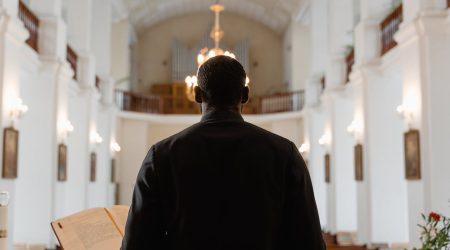How to Hold Church Staff Accountable in a Hybrid Work-from-Home Arrangement
I’ve written previously about why required office hours may not be the best arrangement for church staff. Jesus didn’t say, “Stay in the church building.” He said, “Go.” It is much harder to fulfill the Great Commandment and the Great Commission from a desk.
Additionally, I have cautioned about the pendulum swinging too far the other way. For example, it would be unwise if every church staff person worked from home and rarely came into the office. A couple of office days are essential. For my church team, Tuesdays and Wednesdays are when almost everyone is onsite.
Where is the balance? How do you hold staff accountable without being too rigid with required office hours?
First, you need at least one support person (paid or volunteer) at the church for regular office hours. Someone should be at the church during the week. Second, if your accountability system is limited to the church building, you need a new one. Just because people are onsite and in an office does not mean good work is occurring. Third, a hybrid arrangement will be best for most churches.
What’s expected in today’s hybrid work environment? Among hybrid workers, a majority (63%) report that their employers mandate in-office presence for a specified number of days per week or month. Furthermore, approximately 59% of these hybrid workers indicate that they work from home for three or more days during a typical week. Conversely, 41% of hybrid employees work two days or fewer from home each week.
So, asking your church staff to be onsite two or three days a week is reasonable. What’s best for you? Every church is different. Every context is different. And there are many different ways to staff a church. I will give general guidelines on accountability because it’s impossible to create universal metrics for staff accountability.
When holding staff accountable, start by considering the following three concepts:
-
- Scope of the job. Scope includes the number of job responsibilities. For instance, someone overseeing technology may have a large job scope—lots of tasks to complete every week to keep church operations running smoothly. A teaching pastor with the single responsibility of delivering a weekend message has a small job scope.
- Footprint in church. Footprint includes the number of people managed. The children’s minister typically has one of the largest footprints in the church—a fact often unnoticed by top leaders in the church. Both small group ministry and children’s ministry often have the most significant footprint in the church—lots of people to manage on an ongoing basis.
- Visibility to the church. Does the job require the staff member to connect regularly with a large portion of the church? Teaching pastors and worship pastors have high visibility positions, and there is a certain pressure that comes with these positions unlike other positions in the church.
After considering scope, footprint, and visibility, then create a system of accountability specific to the staff person:
-
- If the staff person has a large ministry scope, then he or she needs task-oriented accountability. This person must be efficient and quick. Unlike someone with a large footprint or high visibility, this person’s personality and demeanor are less important. What is more important is the ability to multi-task with excellence. Hold them accountable for tasks, efficiency, and excellence.
- If the staff person has a large ministry footprint, then a high EQ and managerial skills are essential. Unlike someone with high visibility, stage presence is less important. However, the ability to mobilize people is crucial with a large ministry footprint. Hold them accountable for building relationships and having managerial aptitude.
- If the staff person has high visibility, then he or she needs to command a large audience and endear themselves to people. In short, they need to be likable. They also need to maintain a high energy level. They may not have as many tasks as the person with a large scope, and they may not have as much managerial oversight as the person with a large footprint, but the entire church will likely know them. Hold this person accountable for creating a compelling vision and the ability to inspire others.
If required office hours are the way you create a system of accountability, then you will not likely draw or keep staff with abilities of scope, footprint, or visibility. In fact, required office hours are the way to kill all three. Like many other work environments, however, churches likely need at least a couple of assigned days per week where everyone is in the office together.
Blog by Sam Rainer:
Taken from here



